By Tim Lambert
Here is some brief information about the stained glass windows inside St Peters Church, Somerstown.
The North Side of the Church
The windows on the north side of the church depict saints of the Early Middle Ages.
St Hugo AKA Saint Hugh of Lincoln
St Hugo or St Hugh of Lincoln was born in France in about 1140. He became a monk and rose to be treasurer of the Carthusian order. His fame spread and the English king invited him to become the head of a Carthusian monastery in England. In 1186 he became bishop of Lincoln. He died in 1200. There is a story that a swan followed him everywhere he went in Lincoln. That’s why he is shown with ‘his’ swan in the stained glass window. Hugh is the patron saint of swans!
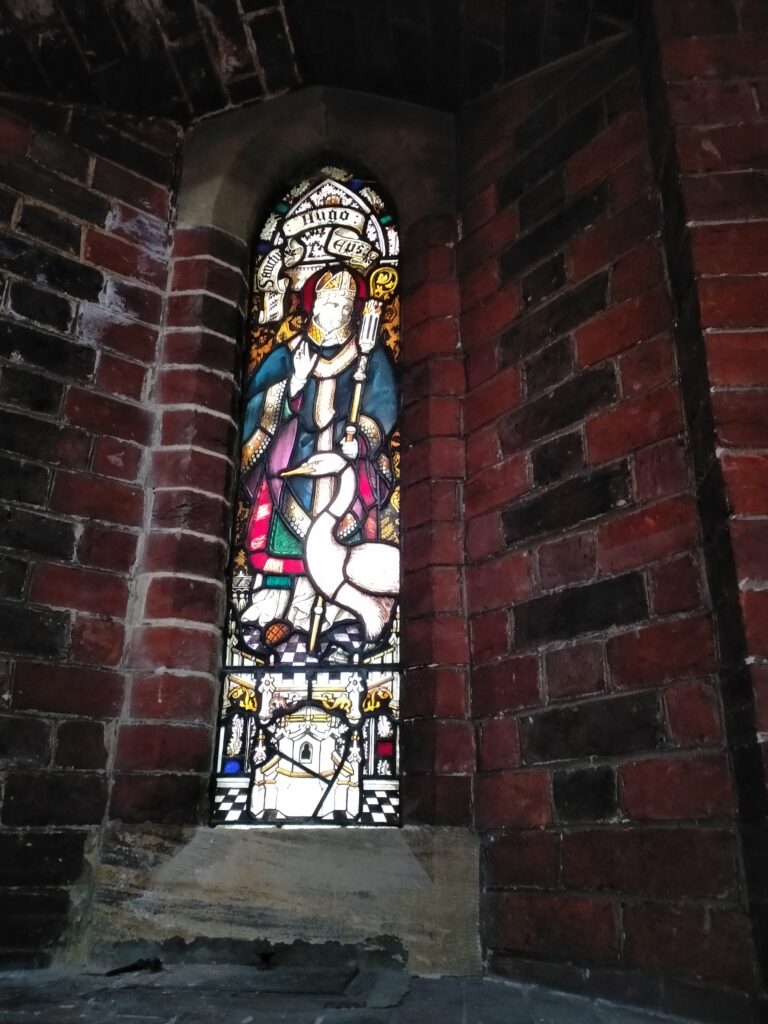
St Swithun
Saint Swithun is a local saint. He was born in about 800. In his lifetime England was divided into smaller kingdoms. Winchester was in the kingdom of Wessex and Swithun was chaplain to King Egbert. In 852 he became bishop of Winchester. Very little is known about Swithun.
There is a story that an old lady had some eggs she intended to sell but they were accidentally broken. Swithun miraculously made them whole again. It’s a nice story but it was written long after he was dead so don’t bet any money on it being true!
Swithun died in 862. He asked to be buried outside the cathedral so people could walk over it and raindrops could fall on it. However, against his wishes, his body was reburied in the cathedral in 971. According to legend St Swithun was not happy about it and it rained heavily on 15 July, the day when his body was moved. There is a superstition that if it rains on St Swithun’s day (15 July) it will rain for the next 40 days!
St Swithun’s Day (15 July) is also Hampshire Day.
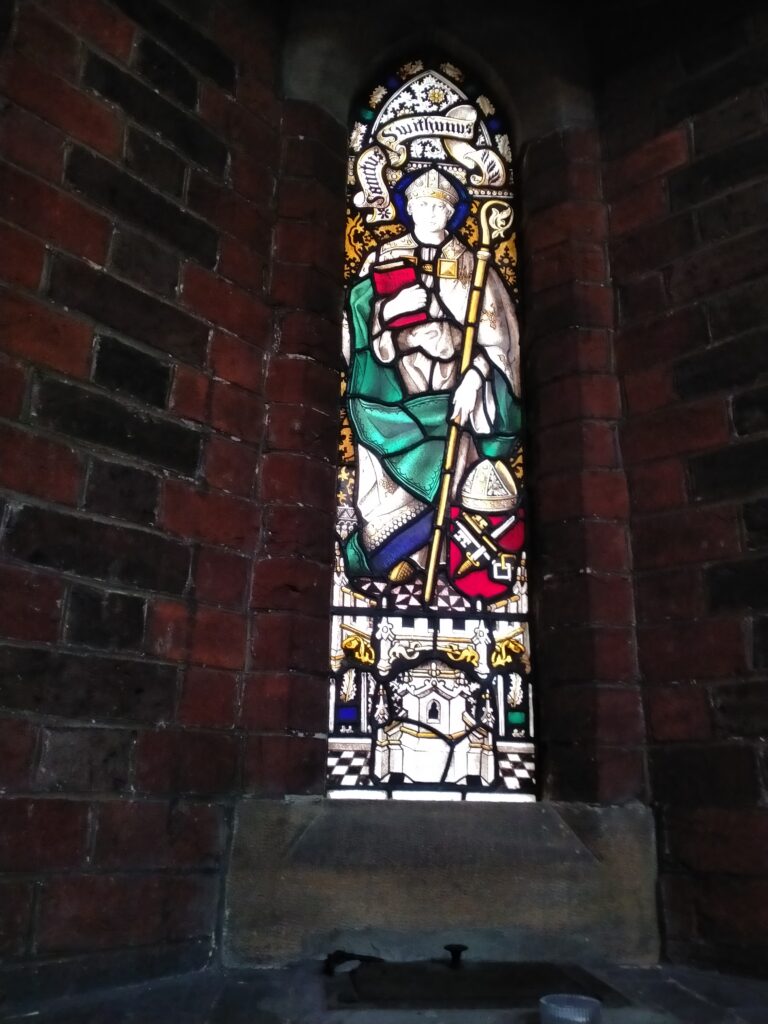
St Edmund
In the 9th century, England was divided into smaller kingdoms. Edmund was born about 841 and he became king of East Anglia in about 865. He fought the Vikings but was eventually captured by them. They demanded he renounce his faith but he refused. The Vikings killed him by tieing him to a tree and then shooting arrows at him. They then cut off his head.
According to a legend people found his body but they could not find his head. However, they heard a voice saying ‘here, here, here’. It turned out the voice belonged to a talking wolf who was guarding it. When the head was reunited with the body it was miraculously reattached. (He is shown with a wolf in the stained glass window). Edmund is the patron saint of wolves.
At any rate, the body of St Edmund was buried in a monastery and the settlement by it became known as Bury St Edmunds. (But the ‘Bury’ part of the name is derived from the Anglo-Saxon word burh, meaning town. It doesn’t mean bury as in bury a body).
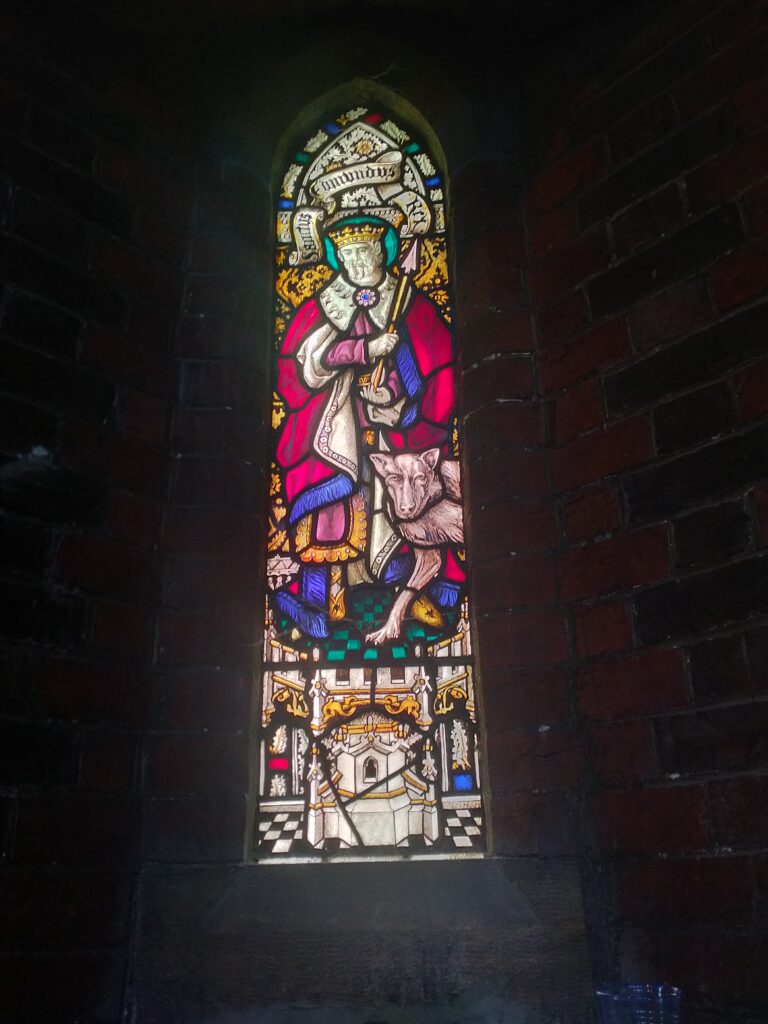
St Augustine of Canterbury
(Not to be confused with St Augustine who lived in the city of Hippo, in North Africa in Roman Times). It’s not known for sure when or where he was born, possibly in Rome. But in 597 the Pope sent him to Kent to begin converting the pagan Anglo-Saxons to Christianity. The king of Kent was converted, (The king was married to a Christian woman named Berta. It may have been partly due to her influence that he was converted to Christianity) and so was his nephew the king of Essex. Augustine was the first archbishop of Canterbury. Augustine died in about 605.
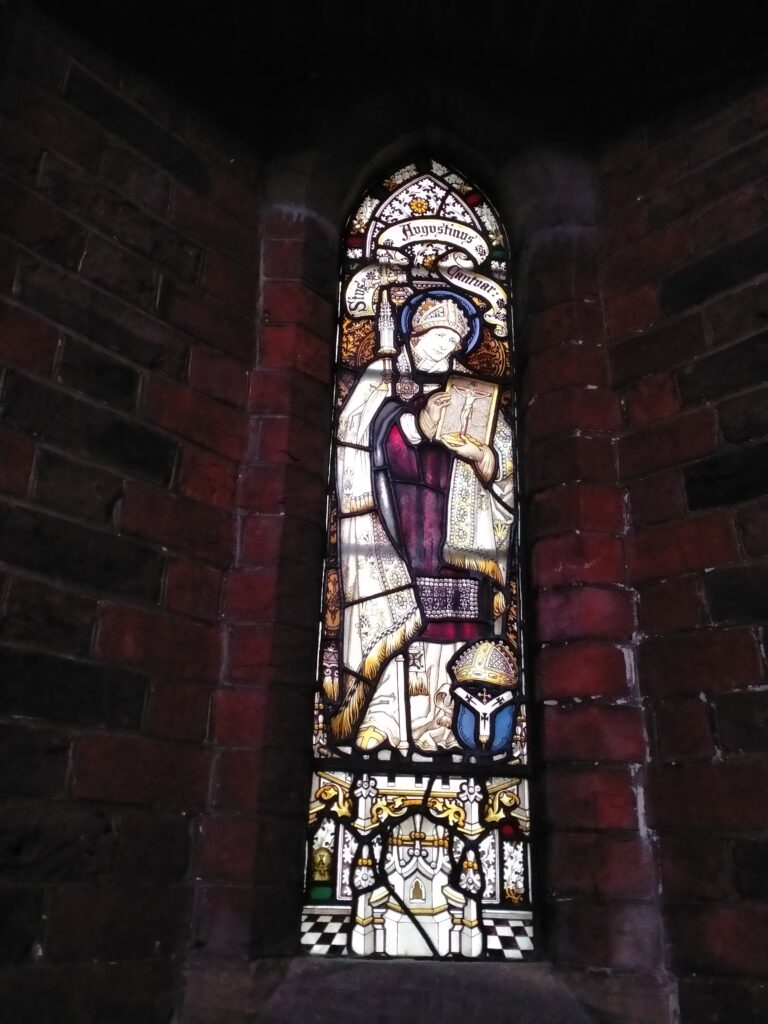
St Oswald
In the 7th century, England was divided into small kingdoms. Oswald was born in Northumbria in the north of England in about 604. In 616 his uncle Edwin became king. But Oswald also had a claim to the throne. For his safety, Oswald fled to the island of Iona in Scotland where he was converted to Christianity.
In 627 King Edwin of Northumbria and all his nobles were baptized. (He may have been influenced by his wife, Ethelburga, who was a Christian). Most of his subjects followed. However, King Edwin was killed in battle and afterward, most of Northumbria reverted to Paganism.
Enter Oswald to save the day. With an army of supporters, he made himself king of Northumbria and he asked monks from Iona to preach to the people.
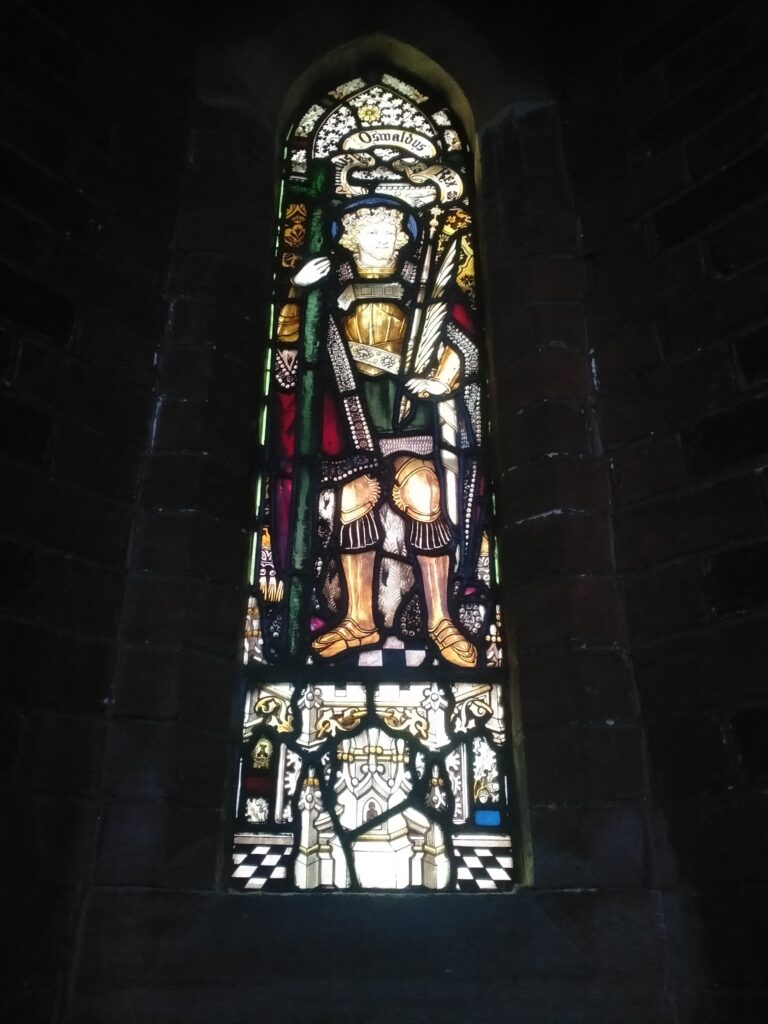
St Hilda
Hilda of Whitby was an influential woman in the Anglo-Saxon Church. Hilda was born in 614. At that time England was divided into separate kingdoms. Hilda was born into a noble family in Northumbria, in northern England. As I said before, in 627 King Edwin of Northumbria and all his nobles were baptized. Hilda was baptized at the same time.
Hilda may have been married and then widowed. At any rate in 647, when she was in her 30s Hilda became a nun in the Abbey of Hartlepool. After a year she was made the abbess. In 657 she founded an abbey at Whitby. It became a great Christian centre.
Then in 664 Whitby was the scene of a famous synod (Church meeting). The Church in Ireland and Scotland had a different way of calculating the date of Easter from the Church in Rome. The king of Northumbria decided to follow the Roman way and Hilda accepted his decision. Hilda died in 680.
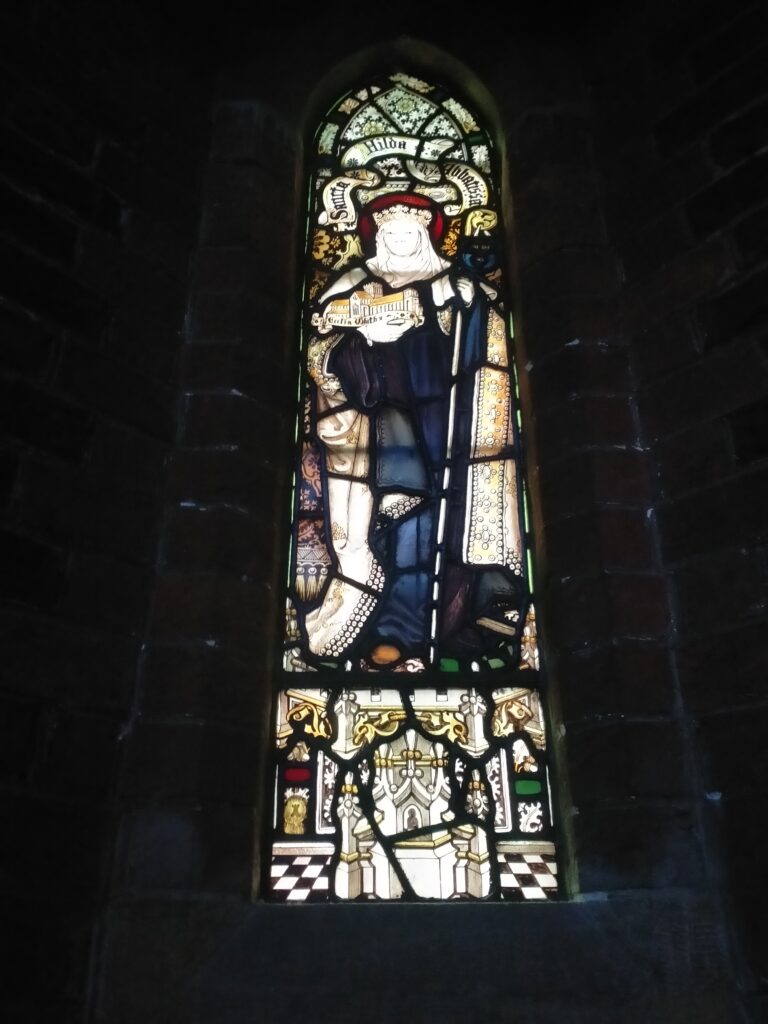
St Columba
St Columba was an Irishman. He was born about 521 and he played a key role in the conversion of Scotland to the Celtic version of Christianity. He and his followers founded a monastery on the island of Iona. It was the springboard for the conversion of Scotland. Columba died in 597.
There is a story that Saint Columba once saw the Loch Ness monster. According to the legend, a man was swimming when the monster approached him. But Columba commanded the beast to go back and not to harm the man and it obeyed him. But since the story was first written down long after Columba was dead I wouldn’t bet on its authenticity!
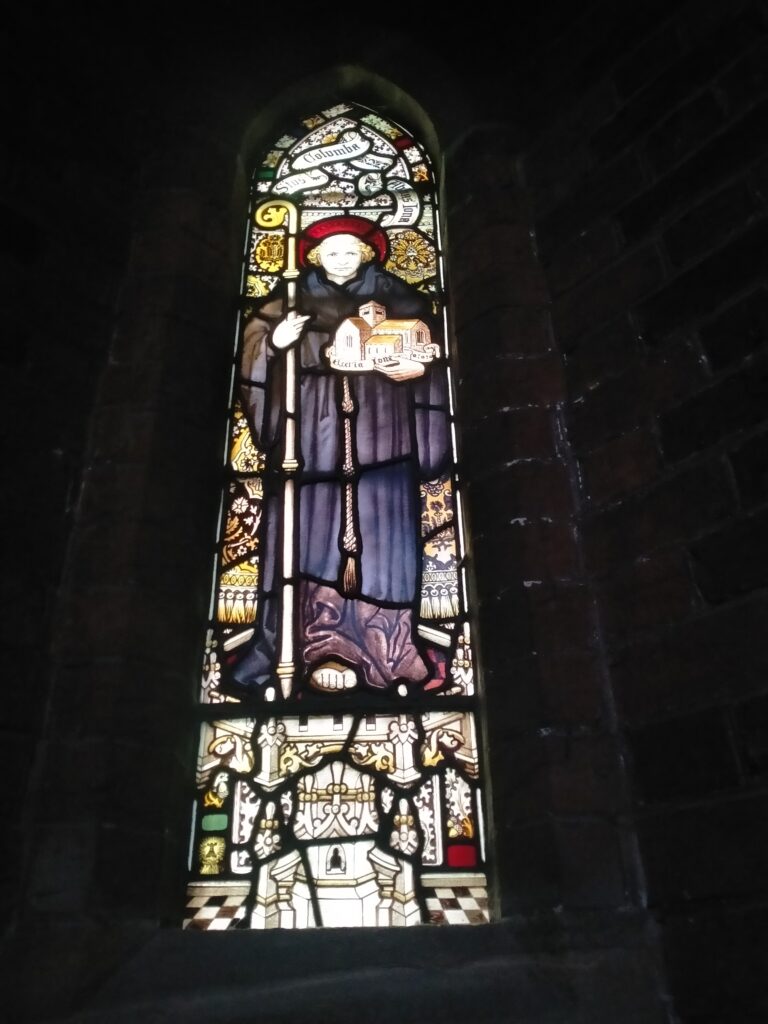
St Aidan
Saint Aidan was Irish but he was a monk in a monastery on the island of Iona in the Hebrides. Saint Oswald, the king of Northumbria asked him to be made bishop of the Northumbrians. In 635 Saint Aidan built a church and monastery on the island of Lindisfarne, which became a leading Christian centre. Aidan died in 651.
There is a story that a pagan army from another part of England once attacked the settlement at Bamburgh in Northumberland, which at that time was surrounded by a palisade of wooden stakes. The pagans piled up wood around the palisade and tried to burn it down but Aidan prayed and the wind changed direction and blew smoke and flames back toward the pagans. Today Aidan is the patron saint of firefighters.
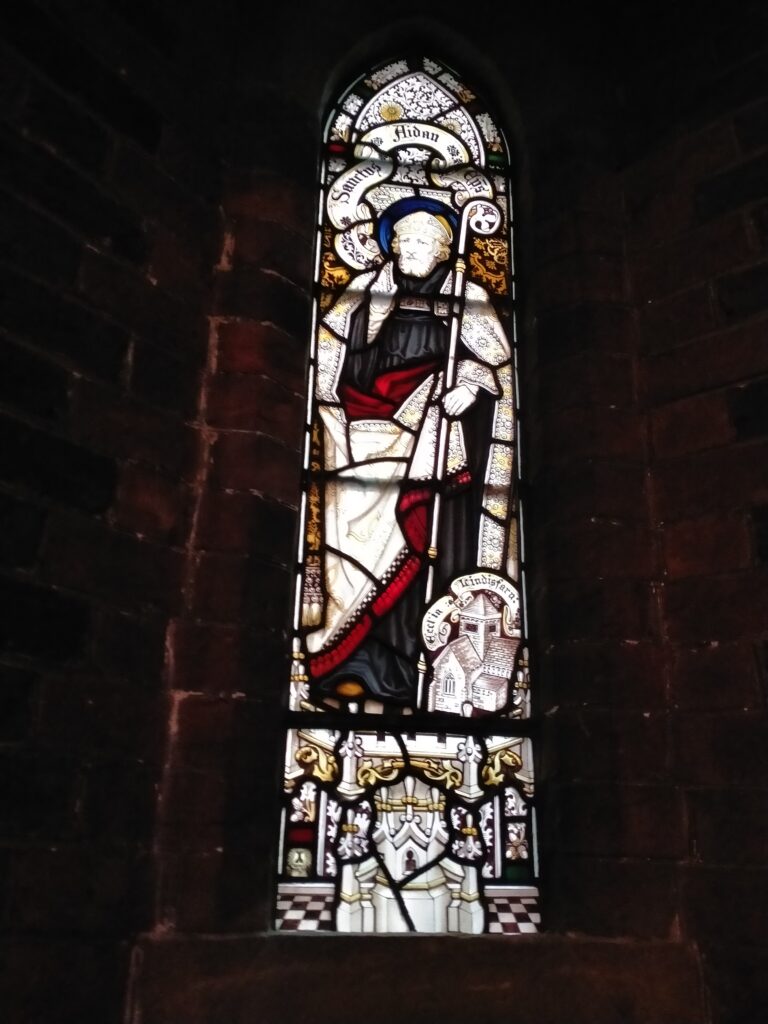
The South Side of the Church
The Trip to Bethlehem
The Latin words on this window mean ‘And you will go to Bethlehem’.

The Prophecy of Isaiah
The Latin words on this window mean ‘And a virgin will conceive and have a son’ (Isaiah 7:14).
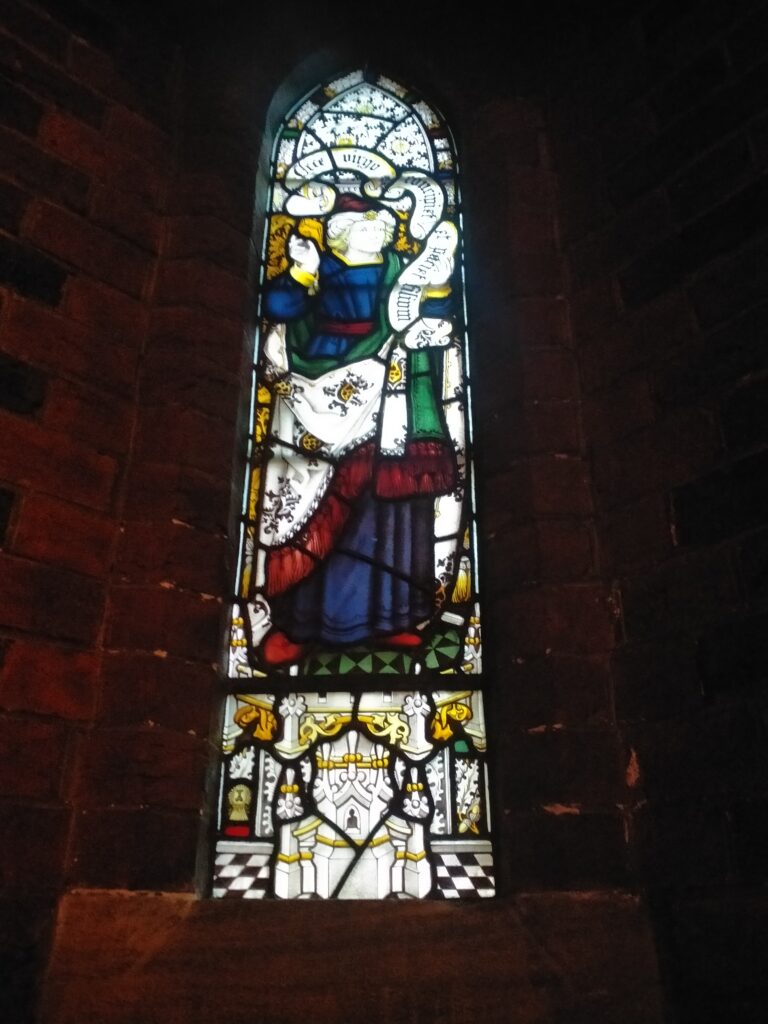
The Virgin Mary
The Virgin Mary holds a white lily. In the Middle Ages, the lily was a symbol of her purity.
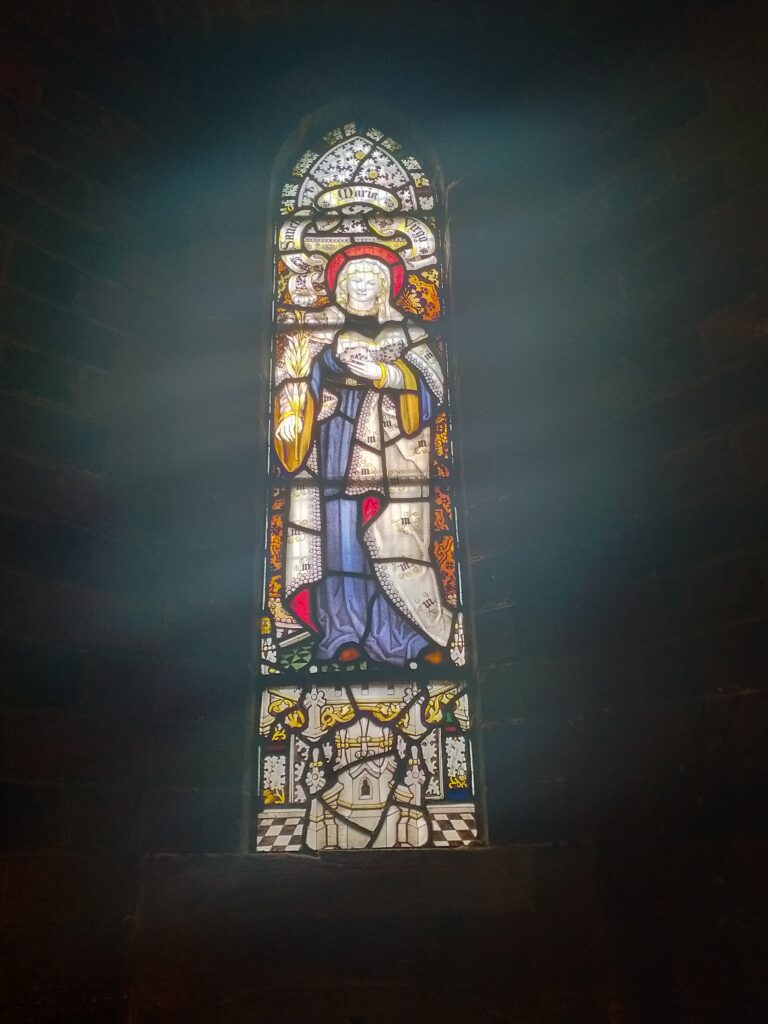
Saint Luke
Saint Luke the Evangelist holds a book that says in Latin ‘ He shall be called the son of the Most High’.

Saint John
St John the Disciple has a banner in front of his leg that says in Latin the first words of John’s Gospel, ‘In the beginning was the word’. The book he is holding says in Latin ‘The word made flesh’.
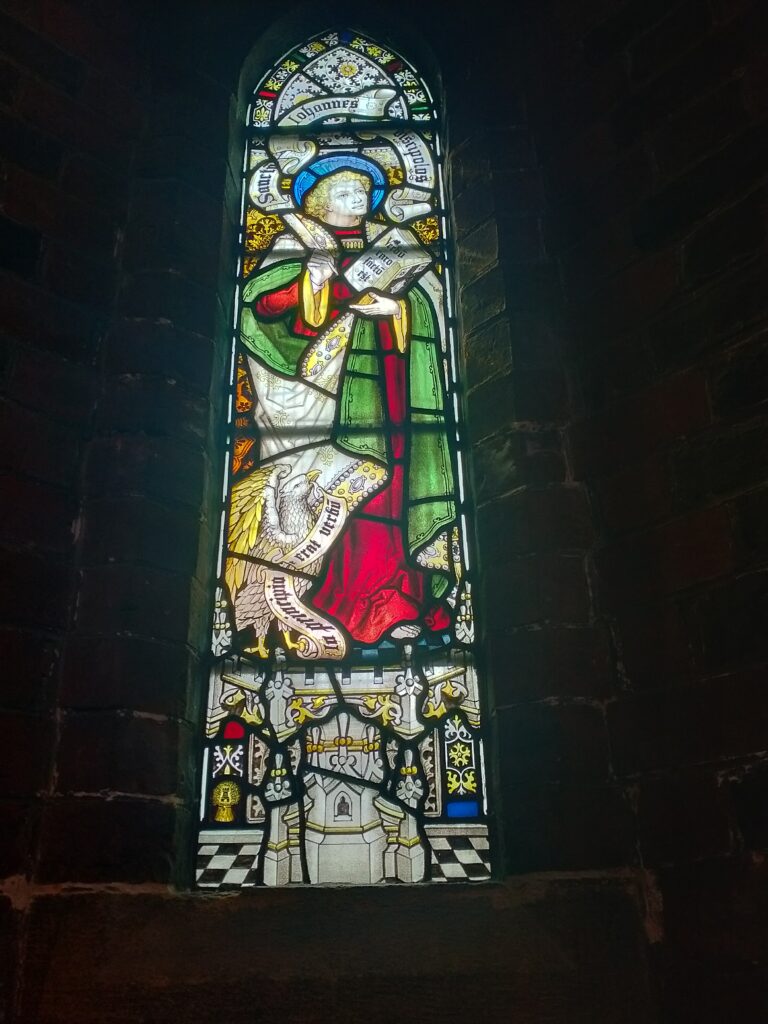
The Archangel Gabriel
This is the Archangel Gabriel. The Latin words he is holding mean ‘Hail full of grace’. There is a legend that when he appeared to Mary he held a lily, a symbol of her purity.
The word archangel comes from the Greek words arkhi, meaning chief and angelos, meaning messenger. However, Gabriel is never actually called an archangel in the Bible. The word archangel is used twice, in Thessalonians 4:16 and Jude 1:9 but Michael is the only angel actually named as an archangel.
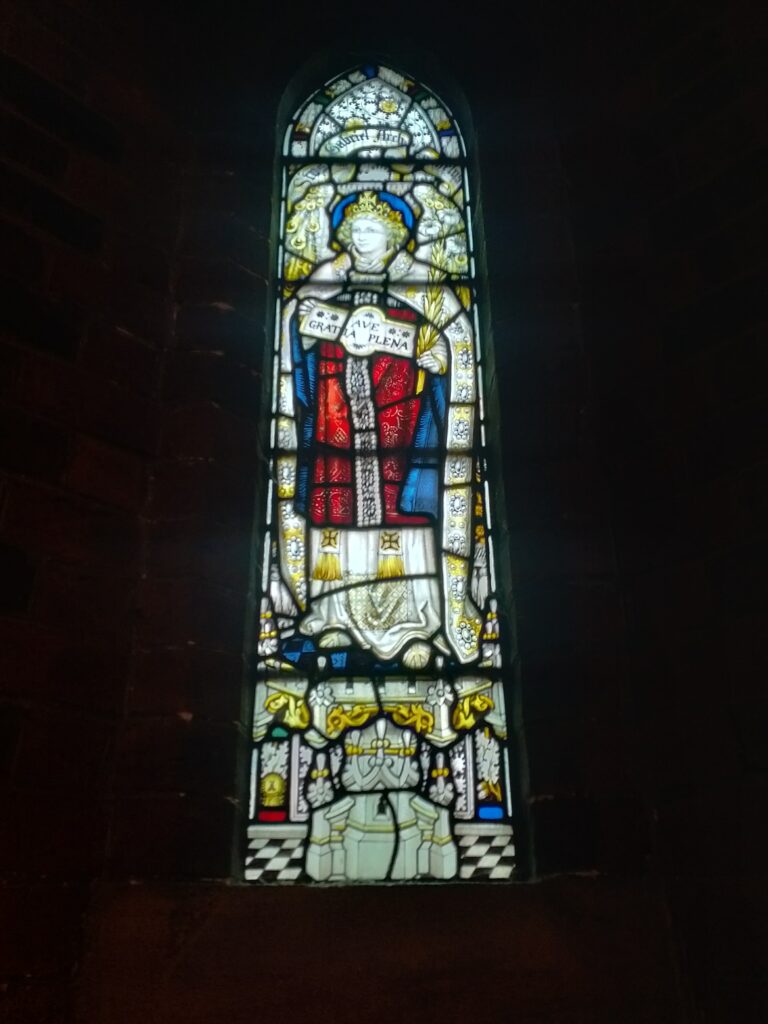
Simeon
This window shows Simeon holding the infant Jesus. God told him he would not die until he saw the saviour. The words around his head in Latin mean ‘Now let your servant depart, Lord”. (Luke 2:25-35)
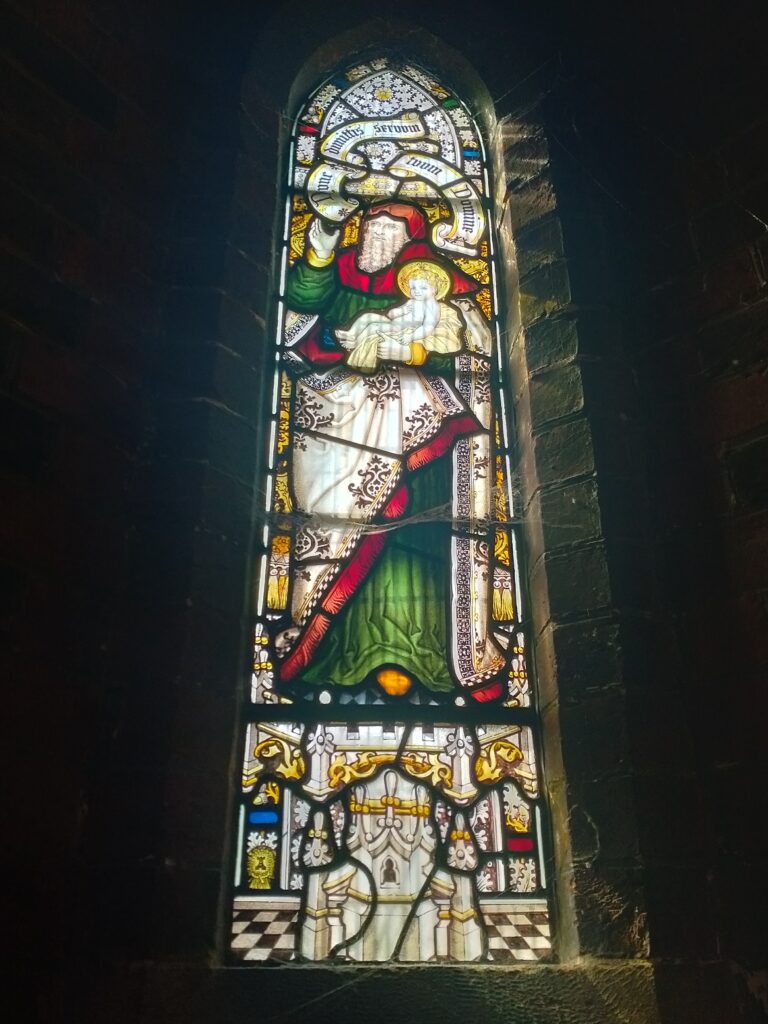
Saint Elizabeth, mother of Mary
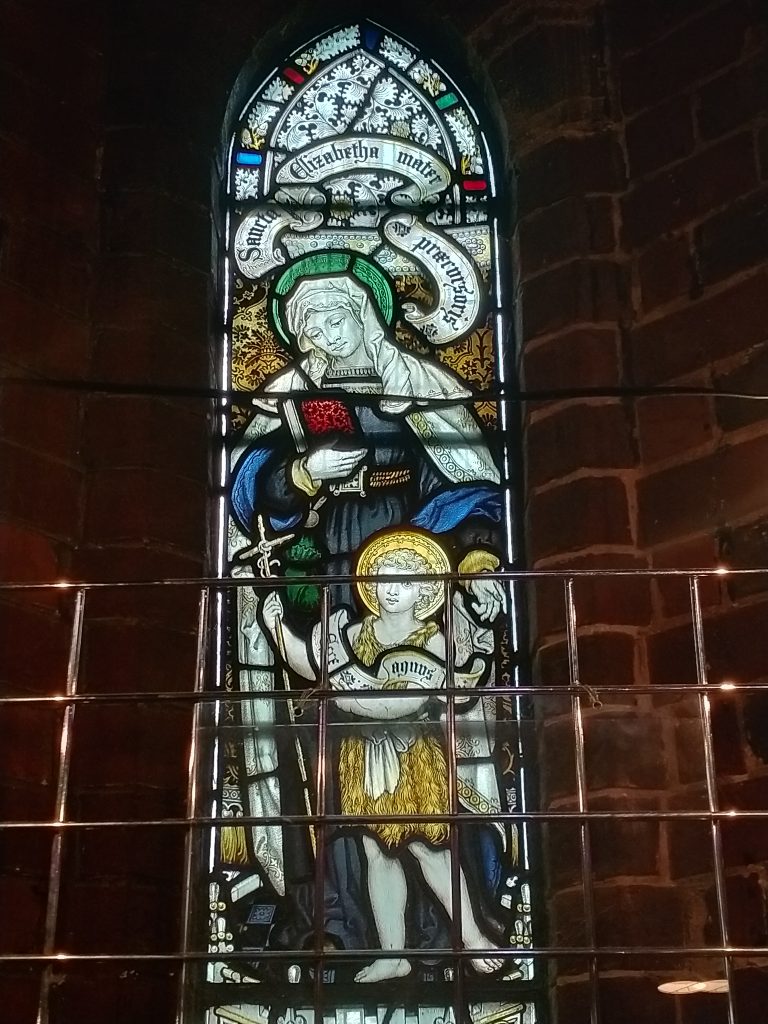
The Latin words above her head mean Saint Elizabeth, the mother’s forerunner. The words in front of the child mean Behold, the lamb of God.